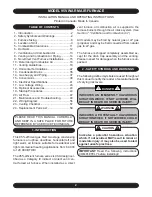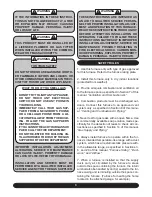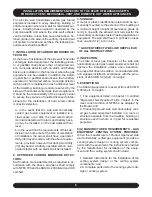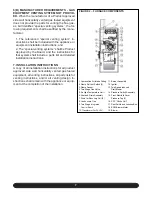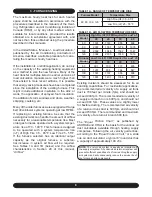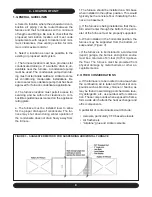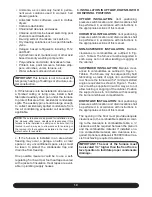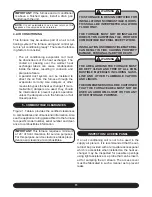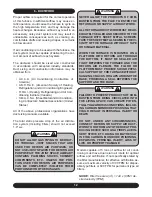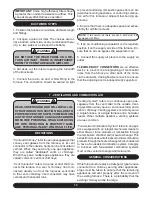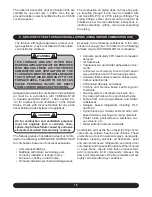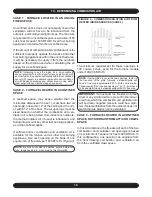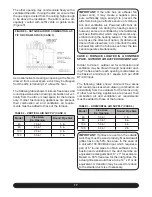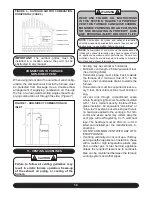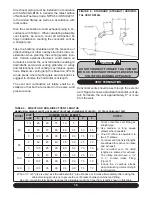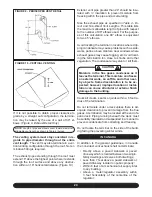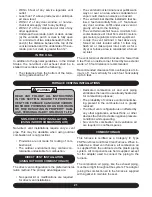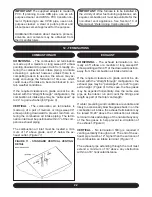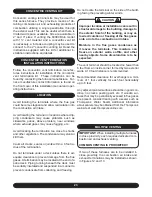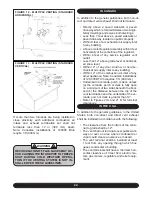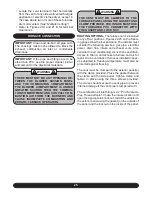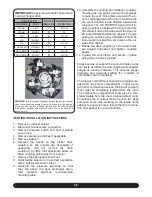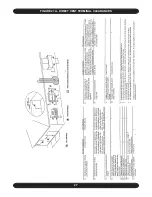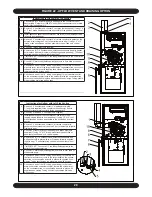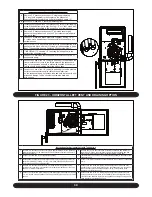
15
!
!
!
!
The optional Concentric Vent Termination Kits are
certified for use until July 1, 2008. Use the ap-
proved transition cement certified by the ULC S636
venting supplier.
The furnace, although designed as a direct vent
type appliance, may be installed with the intake
vent inside the structure.
WARNING
THIS FURNACE AND ANY OTHER FUEL
BURNING APPLIANCE MUST BE PROVIDED
WITH ENOUGH FRESH AIR FOR PROPER
COMBUSTION AND VENTILATION OF THE
FLUE GASES. MOST HOMES WILL REQUIRE
THAT OUTSIDE AIR BE BROUGHT TO THE
FURNACE AREA. FAILURE TO DO SO CAN
CAUSE PERSONAL INJURY, OR DEATH
FROM CARBON MONOXIDE POISONING.
Adequate provisions for combustion and ventilation
air must be in accordance with CAN/CGA-B149
in Canada, and ANSI Z223.1 - 1992, section 5.3,
“Air for Combustion and Ventilation,”
in the United
States. Check with local authorities for any addi-
tional building codes bylaws or regulations.
CAUTION
Air for combustion and ventilation purposes
must not originate from a corrosive atmo-
sphere. Any furnace failure caused by corrosive
elements is excluded from warranty coverage.
The following types of installation sites (but not lim-
ited to the following) will REQUIRE OUTDOOR AIR
for combustion because of chemical exposures:
Commercial buildings
Buildings with indoor swimming pools
Furnaces installed in laundry rooms
Furnaces in hobby or craft rooms
Furnaces installed near chemical storage areas
•
•
•
•
•
The combustion air piping does not have flue gas-
es traveling through it and may be installed with
common ABS, PVC or CPVC piping or fittings. This
piping, fittings, primer and cement will need to be
installed as per the manufacturers instructions in-
cluding cementing, cutting, curing and supporting
the piping.
9 - NON-DIRECT VENT FURNACE INSTALLATIONS (USING INDOOR COMBUSTION AIR)
Exposure to the following substances in the com-
bustion air supply (but not limited to the following)
will also require OUTDOOR AIR for combustion:
Aerosols, particularly CFC based or propelled
aerosols
Air fresheners
“Airplane Glue” and similar adhesives and ce-
ments
Ammonia, as commonly found in permanent
wave solutions used in hair dressing salons
Anti-static fabric softeners used in clothes dryers
Carbon tetrachloride
Chlorinated cleaners and waxes
Chlorine and bromine based swimming pool
chemicals
De-icing salts or chemicals (rock salt, etc.)
Dry cleaning fluids such as perchloroethylene
Fumes from curing polyurethane and similar
substances
Halogen based refrigerants including R-12
and R-22
Hydrochloric acid, muriatic acid and other acid
based masonry washing and curing materials
Printer’s inks, paint removers, varnishes, var-
sol, toluene, etc.
Water softener salt and chemicals
Combustion air must be free of acid forming chemi-
cals such as sulphur, fluorine and chlorine. These
elements are found in aerosol sprays, detergents,
bleaches, cleaning solvents, air fresheners, paint
and varnish removers, refrigerants, and many other
commercial and household products. When burned
in a gas flame, vapors from these products form
acid compounds. Acid compounds increase the
dew point temperature of the flue products and are
highly corrosive after they condense.
•
•
•
•
•
•
•
•
•
•
•
•
•
•
•
Содержание G95V
Страница 27: ...27 FIGURE 21A DIRECT VENT TERMINAL CLEARANCES...
Страница 28: ...28 FIGURE 21B NON DIRECT VENT TERMINAL CLEARANCES...
Страница 53: ...53 22 WIRE DIAGRAM FOR TWO STAGE FURNACE WITH ECM...


